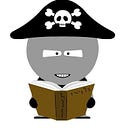Mother Goose
The Mother of All Rhymes (from the New York Times Book Review)
Praising nursery rhymes, Vita Sackville-West observed, “The direct statement can seldom compare in aesthetic value with the oblique statement — which is probably the ultimate meaning that man sets on that strange devisement he calls art.” Nonetheless, some have been eager to wring sense from nonsense. Chief among these were William and Cecil Baring-Gould who, in The Annotated Mother Goose (1962), asserted connections between famous people and such characters as Jack Horner and Miss Muffet; the spider who sat down beside her, incidentally, was said to be the Protestant reformer John Knox. Equally quotidian was Geoffrey Handley-Taylor, whose humorless disapproval of Mother Goose in 1952 appears in his census of crimes to be found therein: under “means of murder,” for example, two cases of choking and one each of devouring, being cut in half, decapitation, squeezing, shriveling, starvation, boiling, hanging and drowning.
In reaction to this literal-mindedness arose what might be called the Robert Graves School of Literary Criticism, in which nursery rhymes were said to be repositories of ancient wisdom and primordial spells. Squarely in this camp was the author of Mary Poppins, P. L. Travers, who saw these verses as forms of “unknowing” and who was drawn to parts mysterious; she asked us to contemplate, for example, the deeper meaning behind Jack and Jill’s going “up” the hill when wells and water are customarily found in the other direction.
The celebrated folklorist Iona Opie now seems in this camp. Opie’s Mother Goose’s Little Treasures offers 22 not-very-well-known nursery rhymes, illustrated by the quite-well-known artist Rosemary Wells. In her introduction, Opie explains her principle of selection: “What I was looking for — what I hope I have found — are the most mysterious fragments from our shared memory: long-ago laughter of little meaning and echoes of ancient spells…. These rhymes are a confirmation that though we must live in the real world, we need to know the way to another world, where there are no limits and nothing is certain.”
Having made a name for herself as a leading anthropologist of childhood (known for collecting playground games and skip-rope rhymes with her husband, Peter), she now sounds more the Jungian than the scientist.
Indeed, Opie favors the quizzical in her collection, with choices like
When the rain raineth
And the goose winketh,
Little knows the gosling
What the goose thinketh.
It used to be that nursery rhymes were kept alive and passed down through the generations by recitation. In our own memory-challenged era, Ma Goose’s opus is being translated into other media and routinely appears in print, often in oversize books meant for children and decorated with gorgeous illustrations. Since the verses change little, what distinguishes these offerings is their pictures.
Sadly, most illustrations in children’s books today amount to a cliché: apparently many adults nowadays believe that the young see the world as if drawn by Grandma Moses and colored by Paul Klee (in truth, the young may actually see the world more in the manner of, say, Dürer or Dalí). As a result, originality in illustration can often be measured nowadays in the distance an artist strikes from the Grandma-Klee axis. To my taste, Wells’s pictures for Opie’s collection don’t go far enough in the originality direction. In particular, there are some curious echoes of Maurice Sendak’s picture books like In the Night Kitchen.
Scott Gustafson’s illustrations for his Nursery Rhymes From Mother Goose show this same kind of echoing run amok, but wonderfully so. The book’s jacket explains that Gustafson was inspired by “Disney and Warner Brothers cartoons” and the illustrations of N. C. Wyeth, then adds, “as well as those by Arthur Rackham, Norman Rockwell and Maxfield Parrish.” That is nowhere near enough. I would add, “as well as those by Walter Crane, Kate Greenaway, Blanche Fisher Wright, Michael Hague and others.”
These echoes appear, for example, in what, for copyright reasons, must be described as the cousin of Disney’s Jiminy Cricket; in comic modifications of well-known pictures where (according to an author’s note) Gustafson substitutes portraits of friends; and in amusing hybrids where the styles of two different artists mingle on the same page. There is only one shortcoming to this technique: In places where I could congratulate Gustafson on his originality, I worry that I am just not smart enough to know whether I am being had.
No similar feeling of uncertainty hovers over the professionally polished work of the award-winning veteran artists Leo and Diane Dillon. Their Mother Goose: Numbers on the Loose is a collection of counting rhymes (from “One potato, two potato” to verses celebrating the upper ordinals) where we encounter animated numbers with dancing legs, parades of animals and harlequins, and the back story to “Baa, Baa, Black Sheep.” In each double-page picture, as if to keep the other hand busy, the Dillons play variations on a curve: here, from upper left to lower right; there, the opposite; over there, both; then, neither.
Of course, in the end, the great virtue of the nursery rhymes is their enviable economy. These little bouillon cubes — think of “Humpty Dumpty” or “Mary, Mary, Quite Contrary” — are the shortest of stories, models of memorable concision. Indeed, if this review were a nursery rhyme, it would be a short story-in-verse about Not So Clever, Too Clever and Clever Enough.
Originally appeared in the New York Times Book Review (November 11, 2007). See also my related essays on Nonsense and Nursery Rhymes.
If you liked this, “clap” below so others will see this on Medium. To see the ten most popular entries on this blog, click here. And if you’d like to read more essays like this, click the “follow” button at the top of this page.
Twitter: twitter.com/Jerry_Griswold
Facebook: www.facebook.com/griswold.jerry
